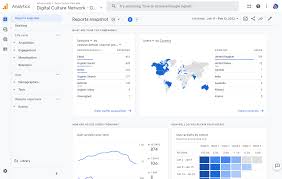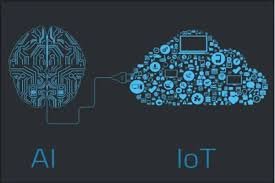The Power of Analytics in Business
In today’s digital age, data is king. Businesses have access to vast amounts of information generated from various sources, including customer interactions, website traffic, sales figures, and more. However, without the right tools to make sense of this data, it remains just that – raw information.
Analytics is the key to unlocking the power hidden within this data. By using advanced analytical tools and techniques, businesses can gain valuable insights that drive informed decision-making and strategic planning.
Types of Analytics
There are several types of analytics that businesses can leverage:
- Descriptive Analytics: Describes what has happened in the past based on historical data.
- Predictive Analytics: Forecasts future trends and outcomes based on historical data and statistical algorithms.
- Prescriptive Analytics: Provides recommendations on what actions to take based on predictive analytics and business rules.
The Benefits of Analytics
The implementation of analytics offers numerous benefits to businesses:
- Data-Driven Decision Making: By analysing data, businesses can make decisions based on facts rather than intuition.
- Improved Efficiency: Analytics can identify inefficiencies in processes and operations, leading to cost savings and improved productivity.
- Enhanced Customer Insights: Understanding customer behaviour through analytics allows businesses to tailor their products and services to meet customer needs effectively.
- Risk Mitigation: Predictive analytics can help businesses anticipate potential risks and take proactive measures to mitigate them.
The Future of Analytics
The field of analytics is constantly evolving with advancements in technology such as artificial intelligence (AI) and machine learning. These technologies enable businesses to analyse vast amounts of data quickly and accurately, providing deeper insights into their operations and customers.
In conclusion, analytics is a powerful tool that empowers businesses to make smarter decisions, improve operational efficiency, enhance customer experiences, and stay ahead of the competition. Embracing analytics is no longer an option but a necessity for any business looking to thrive in today’s data-driven world.
Understanding Analytics: Key Questions and Insights for Business Success
- What is analytics and why is it important for businesses?
- What are the different types of analytics used in business?
- How can analytics help improve decision-making in organisations?
- What tools and software are commonly used for data analytics?
- How can businesses leverage predictive analytics to forecast future trends?
- What are the key challenges faced by companies when implementing analytics?
What is analytics and why is it important for businesses?
Analytics is the process of analysing data to gain valuable insights and make informed decisions. In the business context, analytics plays a crucial role in helping organisations understand trends, patterns, and relationships within their data. By utilising advanced analytical tools and techniques, businesses can uncover hidden opportunities, identify potential risks, and optimise their operations. Analytics enables businesses to move beyond intuition and gut feelings by providing evidence-based insights that drive strategic decision-making. In today’s competitive landscape, where data is abundant and dynamic, leveraging analytics is essential for businesses to stay agile, relevant, and ahead of the curve.
What are the different types of analytics used in business?
Businesses utilise various types of analytics to extract valuable insights from data. The three main types of analytics commonly used are descriptive analytics, predictive analytics, and prescriptive analytics. Descriptive analytics focuses on summarising historical data to provide a clear picture of what has happened in the past. Predictive analytics, on the other hand, uses statistical algorithms and historical data to forecast future trends and outcomes. Finally, prescriptive analytics goes a step further by not only predicting future scenarios but also recommending specific actions that businesses can take based on the insights gained from predictive analysis. Each type of analytics plays a crucial role in helping businesses make informed decisions and drive strategic growth.
How can analytics help improve decision-making in organisations?
Analytics plays a crucial role in enhancing decision-making within organisations by providing valuable insights derived from data analysis. By leveraging analytics tools and techniques, businesses can gain a deeper understanding of their operations, customer behaviour, market trends, and more. This data-driven approach enables decision-makers to make informed choices based on facts and trends rather than intuition or guesswork. Analytics helps identify patterns, predict outcomes, and evaluate different scenarios, empowering organisations to mitigate risks, seize opportunities, and ultimately make strategic decisions that drive growth and success.
What tools and software are commonly used for data analytics?
In the realm of data analytics, a variety of tools and software are commonly employed to extract valuable insights from vast amounts of data. Popular tools such as Tableau, Power BI, and Google Analytics are widely used for visualising and interpreting data in user-friendly formats. For more advanced analytics tasks, tools like Python with libraries such as Pandas, NumPy, and Scikit-learn offer powerful capabilities for data manipulation, statistical analysis, and machine learning. Additionally, cloud-based platforms like AWS (Amazon Web Services) and Google Cloud Platform provide scalable infrastructure for storing and processing large datasets efficiently. The choice of tools depends on the specific requirements of the analytics project and the expertise of the users involved.
How can businesses leverage predictive analytics to forecast future trends?
Businesses can leverage predictive analytics to forecast future trends by analysing historical data and identifying patterns and correlations that can be used to make predictions. By using statistical algorithms and machine learning techniques, businesses can build predictive models that extrapolate from past data to anticipate future outcomes. These models can help businesses identify potential opportunities, risks, and trends, enabling them to make informed decisions and strategic plans. By harnessing the power of predictive analytics, businesses can stay ahead of the curve and adapt proactively to changing market conditions.
What are the key challenges faced by companies when implementing analytics?
Implementing analytics can be a transformative process for companies, but it also comes with its own set of challenges. One key challenge faced by companies is the integration of data from various sources into a cohesive and reliable system. Ensuring data quality, consistency, and accuracy is crucial for meaningful analysis. Another common challenge is the shortage of skilled professionals who can interpret and derive insights from complex data sets. Additionally, aligning analytics initiatives with business goals and securing buy-in from stakeholders across the organisation can be hurdles that companies need to overcome to successfully implement analytics strategies.






